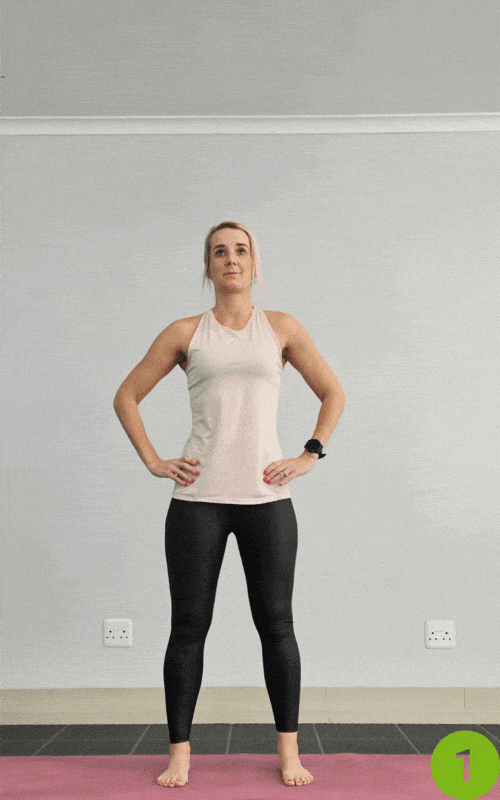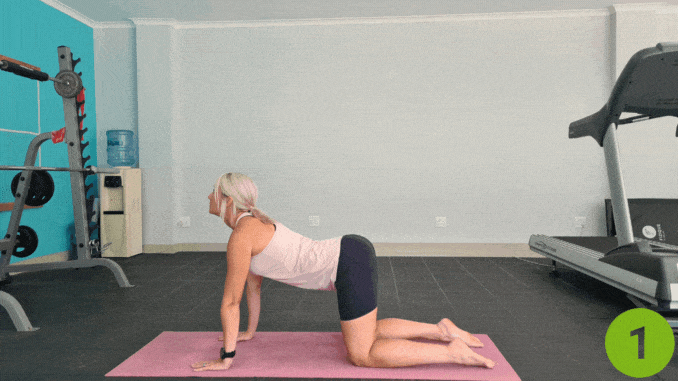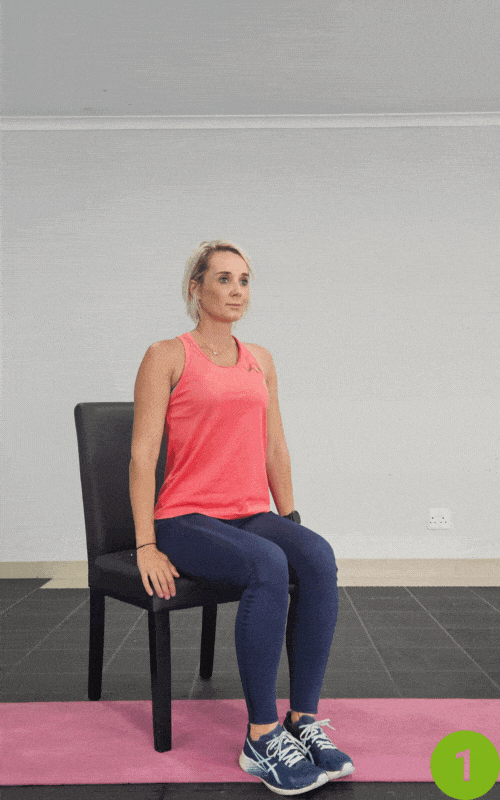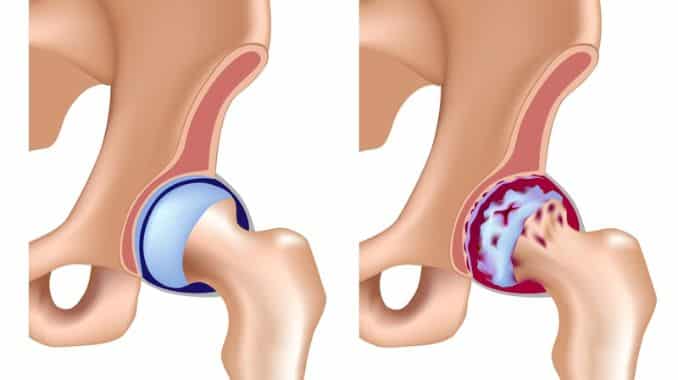Tight hips can lead to lower back pain, poor posture, and limited movement—especially if you sit a lot, making it important to learn how to increase hip flexibility.
But improving your hip flexibility isn’t just about feeling looser—it helps you move better, prevent injuries, and ease daily discomfort.
The best part? You don’t need a long workout.
Just a few simple stretches a day can loosen your hips, relieve tension, and then help you feel better fast.
Hip mobility is incredibly important for everyday tasks and then daily comfort.
Use these movements to increase your hip flexibility and then move better.
Mild hip deformities [2] can often be managed with targeted exercises and physical therapy that strengthen the muscles around the hip, improve posture, and support better joint movement.
Regular stretching and mobility exercises can also help reduce stiffness and prevent further strain.
Medical Disclaimer: The information in this blog is for enlightening and educational purposes only and is not intended as medical advice. The content in this post is not meant to substitute for a professional medical diagnosis, advice, or treatment. Always ask advice from your physician or other qualified health providers with any questions you may have regarding a medical condition.
1. Foam Rolling Out the Quads
- Move over on your stomach and then go up on to your forearms maintain proper alignment with your head, shoulders, hips and legs.
- Position the foam roller just about your thigh level and then roll through your quads just below the hip joint and below the knee.
- Return to starting position and repeat movement.
- Moreover, start off with one set of 5 repetitions.
- To learn how to increase hip flexibility, perform the exercise in a smooth, controlled movement with a quick stop at the end position.
- The intensity is moderate.
- The purpose of the exercise is to work on improving hip flexibility.
2. Tennis Ball Into the Glutes
- Basically, begin in an upright sitting position.
- Place the tennis ball around the hip joint area and then put enough weight against the ball.
- Move your glutes around the ball, massaging the hip joint area.
- Repeat the movement.
- After that, start off with one set of 5 repetitions.
- Perform the exercise in a smooth, controlled movement with a quick stop at the end position.
- The intensity is moderate.
- The purpose of the exercise is to work on the hip joint area and the muscles around it.
3. Hamstring Stretch on the Wall
- To begin the best moves to improve hip flexibility, move toward the wall, and then lie on your back on the floor with your hands at your sides.
- Raise either just one or both legs up against the wall.
- Hold this position for 10 seconds, maintaining good breathing.
- Lower both legs back down to return to the starting position and then repeat the movement.
- After that, to intensify the exercise, move your seat closer to the wall as you go through the movement.
- To learn how to increase hip flexibility, start off with one set of 2 repetitions, ideally holding for 10 seconds.
- Perform the exercise in a smooth, controlled movement with a good hold at the end position.
- The intensity is light.
- The purpose of the exercise is to stretch out the hamstrings to help improve flexibility in the hips.
4. Low Lunge

- Begin the best moves to improve hip flexibility in an upright standing position, maintaining proper alignment with your head, shoulders, hips and legs.
- Take a big step back with one foot and then drop your back knee down to the ground.
- Tighten up your glutes and abdominal area and bring your hips forward.
- Hold this position for 10 seconds.
- Return to the starting position and then repeat the movement on the opposite leg.
- Start off with one set of 2 repetitions, ideally holding for 10 seconds.
- Perform the exercise in a smooth, controlled movement with a good hold at the end position.
- The intensity is light.
- However, the purpose of the exercise is to stretch out the front of the hips.
5. Seated Butterfly Stretch

- Begin in an upright sitting position on a pillow, while maintaining good alignment of your head, shoulders, and hips.
- After that, engage your core.
- Bring your knees out to the sides and then bring the soles of your feet together.
- Place both hands on your knees and close your eyes.
- Hold the position for several deep belly breaths, in through your nose and then out through your mouth.
6. Standing Hip Circles

- Begin in an upright standing position with your feet shoulder-width apart, maintaining good alignment with your head, shoulders, and hips.
- After that, place both hands on your hips.
- Engage your core to support your movements and then learn how to increase hip flexibility.
- Slowly shift your weight to one side, bending your knee slightly and extending the opposite leg out to the side.
- Begin moving your hips in a smooth, circular motion—forward, side, back, and around—like you’re drawing a big circle with your hips.
- Complete several circles in one direction, then reverse the movement.
- Hold each direction for several deep belly breaths, in through your nose and then out through your mouth.
- Keep your movements slow and controlled to gently stretch and warm up your hip muscles.
7. Lying Knee-to-Chest

- Lie on your back with your knees bent and your feet flat on the floor.
- Raise one leg, holding the lower part with both hands.
- Pull your knee closer to your chest to intensify the stretch.
- Hold the position for several deep belly breaths, in through your nose and out through your mouth.
- Relax, return to the starting position, and then repeat the movement on the opposite side.
8. Cat-Cow Stretch

- Begin in an all-fours position with your hands beneath your shoulders and then your knees under your hips.
- Inhale and then contract your abdominal area.
- Exhale and slowly round out your mid-back as you drop your head downward, focusing on how to increase hip flexibility during the movement.
- Then alternate by inhaling as you slowly lift your head and arch your mid-back.
- Repeat the movement, alternating directions.
9. Seated March

- Begin in an upright sitting position with your feet hip-width apart, maintaining good alignment with your head, shoulders, and hips.
- Place your arms at your sides.
- After that, engage your core.
- Raise one knee, then put it down, followed by your opposite knee in an alternating movement like you are marching but not moving in your place.
- Return to the starting position and then repeat the movement.
10. Frog Stretch

- Begin in a tabletop position on your hands and knees, maintaining good alignment with your head, shoulders, and then hips.
- Slowly slide your knees out to the sides as far as comfortable, keeping your feet in line with your knees and toes pointing outward.
- After that, lower your upper body onto your forearms.
- Engage your core and keep your back straight.
- Hold this position for several deep belly breaths, in through your nose and out through your mouth.
- Relax and return to the starting position.
What Causes Hips to Get Tight or Painful
Tight hip flexors can cause discomfort and limit movement.
Hip pain [1] is common and disabling, affecting people of all ages.
According to a study on hip pain, common causes include:
- Hip impingement (bones in the joint pinch together) – hurts when sitting or leaning forward.
- Labral tear (damage to the cartilage rim of the joint) – causes clicking or sharp pain.
- Snapping hip (a condition where a tendon or muscle moves over a bone during motion) – common in dancers or runners, often causes popping or catching sensations.
- Muscle overuse or weakness, especially in the buttocks or thighs.
- Arthritis causes stiffness, especially in older adults.
According to Dr. Christmas, older adults who stay active are less likely to experience severe hip pain. 12.6% of those who were active felt pain, while 18.4% of those who weren’t active reported pain.

- Nerve pressure or irritation, like in piriformis syndrome, which affects the sciatic nerve.
Signs Your Hips Might Be Too Tight
- Pain when walking, sitting, or moving your leg
- Clicking, popping, or snapping sounds in your hip
- Feeling stiff or stuck during movement
- Pain that radiates to your thigh, groin, or lower back
- Trouble doing things like getting in/out of a car or putting on shoes
How Exercise Helps with Hip Pain and Flexibility

Exercise is one of the best treatments for managing hip and knee osteoarthritis (OA) [3].
It’s recommended by all major health guidelines.
It can help:
- Reduce pain
- Improve how well your hips move
- Strengthen the muscles around the joint
- Improve balance and posture
- Support better movement and reduce the risk of falls
Conclusion
You don’t need intense workouts or complicated routines to loosen tight hips.
Just a few simple stretches each day can go a long way in helping you feel better, move more easily, and reduce stiffness.
By gently moving your hips, you can ease pain, improve posture, and support better balance and flexibility.
The key is to start slow, breathe deeply, and stay consistent.
Over time, your hips will become more open and comfortable, making everyday movements—like walking, sitting, or getting in and out of a car—much easier.
Small steps each day do add up. Keep going—you’re doing great.
It’s time to Unlock Your Hip Flexors and release the hidden tension sabotaging your health, posture, and performance. In just minutes a day, you can restore mobility, eliminate nagging pain, and feel years younger.
Frequently Asked Questions
Can hip flexibility be improved?
Yes, hip flexibility can typically be improved with regular, gentle hip flexor stretches and then hip mobility exercises. By consistently practicing these movements, you can reduce hip tightness and enhance the range of motion over time. However, progress varies based on individual factors such as age, activity level, and any underlying conditions. If you have tight hip flexors, it’s important to be patient and persistent.
How long does it take to improve hip flexibility?
The timeline for improving hip mobility can differ from person to person. Some individuals may notice improvement in just a few weeks with regular stretching, while others may need more time. The extent of your hip flexor tightness, how often you engage in hip flexor stretches, and any other factors like poor hip mobility or muscle imbalances will affect the speed of progress.
Why are my hips so tight?
Tight hip flexors are often caused by prolonged periods of sitting, poor posture, or lack of movement. Other contributing factors can include muscle tightness in the surrounding muscles, previous injuries, or even structural differences in the hip bones or joints. Weakness in muscles like the glutes or core can also lead to poor hip mobility and contribute to hip flexor pain.


